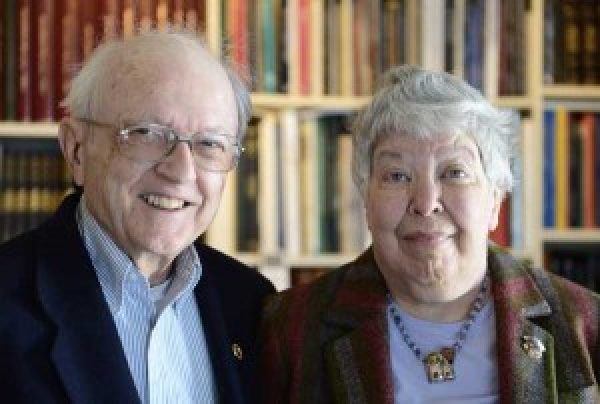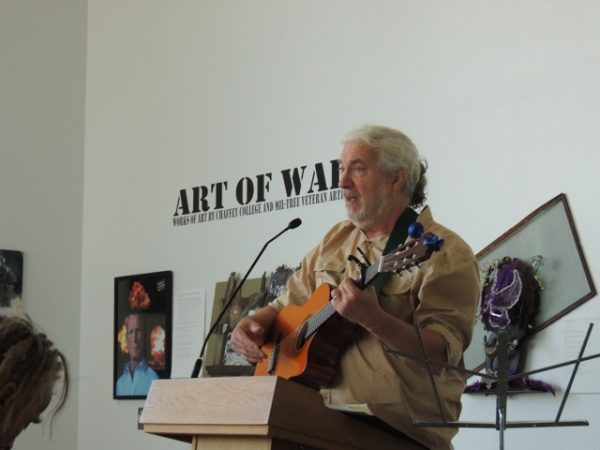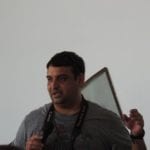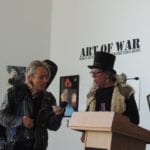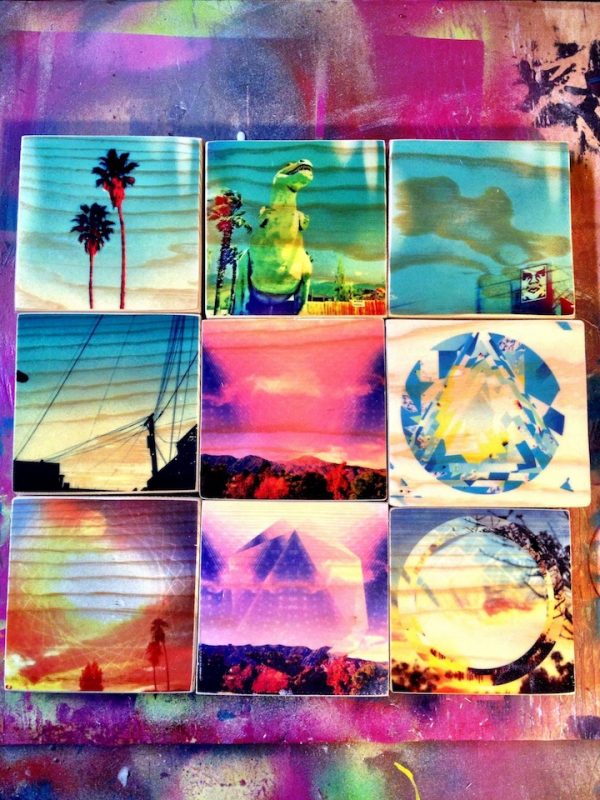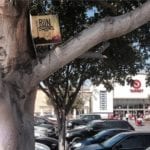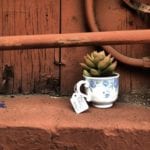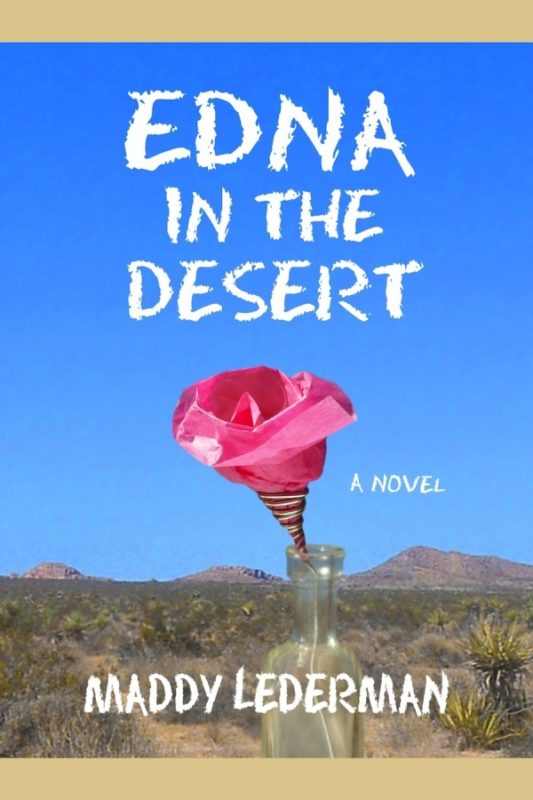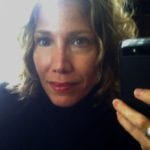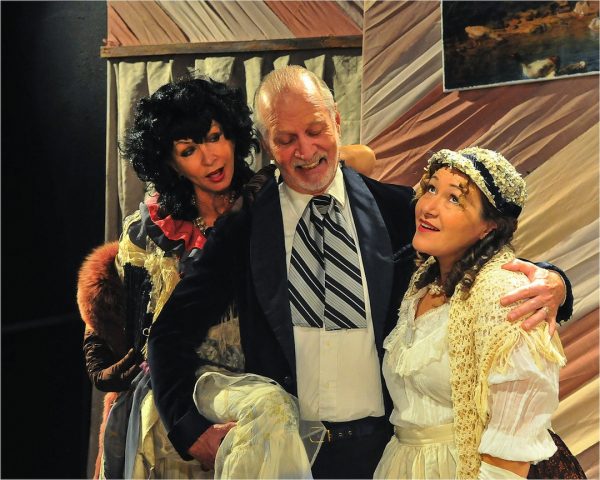

“Is he Dead?” which opened at Redlands Footlighters Theatre March 6, is a play by American writer Mark Twain that was discovered in 2002. It is a farce about friendship, love, and financial struggles of an artist, a story influenced by Twain’s own personal experiences. I met with director Carol Damgen for a chat about the unique play, her ambitions as a director and playwright, and theatre in the San Bernardino area.
Esther: Tell me a little bit about your background.
Carol: I teach at Cal State San Bernardino; I’ve been there 10 years teaching in the Theatre Arts department. While I’m full time there, I am also a director, playwright and actor. I’ve done scene design, sound design, costume design. So theatre consumes me.
Esther: I understand you’re doing your MFA low residency; where and in what?
Carol: It’s at UCR. So yeah, I have my bachelors in theatre. I have my masters in communication studies, with a focus on performance studies, and then my MFA is in writing for the performing arts.
Esther: You’ve done two original plays. Is writing something that you see yourself transitioning into, away from directing? Or are you interested in a combination of the both?
Carol: I think it’s a combination of the two. I used to only want to act, but I’ve always had a desire to write. It’s kind of funny. My mom always used to tell me that I was a good writer, but I never really believed her. And then I just decided that I would give it a shot and I wrote a play based on Edgar Allan Poe. It’s called the “The Twists and Turns of Edgar Allan Poe” and luckily it was produced and had a fully realized production at Cal State, San Bernardino which is how I was accepted into the Dramatist Guild. Recently, I wrote an original play about Jackie Robinson, which is still touring. We have our last tour date tomorrow. We’ve been working on this show since November of last year. I do love to write and because my MFA is in writing for the performing arts, I am concentrating on my writing at the moment. .
Esther: I’ve noticed many arts programs and events in San Bernardino County are rooted in or associated with Cal State San Bernardino. Could you talk a little bit about this?
Carol: We are the only public university in the county and we have a huge outreach program when it comes to art, theatre, music, and dance. So many times we take theatre, dance, music, or art programs out into the community and make sure that it’s very important for teachers to have the ability to bring arts to the students. Unfortunately with budget cuts it’s very challenging sometimes. So I’m a teacher leader with the California Arts project, which means that I teach teachers how to bring drama and theatre into their programs. We actually physically go into the schools and bring theatre to the students, because many don’t get a chance to see any theatre and they deserve the chance to have an art class, be involved with music, learn an instrument, and hopefully have the ability to dance or witness a dance recital. So I think Cal State San Bernardino is really an important aspect to keeping culture alive in San Bernardino.
Esther: So in terms of the play, what interested you in directing “Is He Dead”?
Carol: I love Mark Twain; he is one of my favorite writers. This is a little gem that he actually wrote in the 1800’s and it was passed on. He was a man who most people know as one of the most prolific American writers of all time, but he’s also a writer who went through some hard times, and owed quite a few debts. So he had to travel around the world to go on speaking engagements to pay back his creditors. And so he thought it would be interesting to write about a famous man who is a very talented person, but who ends up owing a lot of money, and that’s how this play came about. But it was passed on; people weren’t interested in it at the time so it was kind of forgotten. Then in the mid-2000’s there was a dramaturg and historian who found the play and she brought it to David Ives, who is a very famous playwright in his own right, and he was very interested and adapted it and then it ended up going to Broadway in 2007 and people were very excited. So it is new to many audiences. People will say, “‘Is he dead?’ What’s that?’ ‘it’s a new play by Mark Twain’ and they say ‘How can it be a new play by Mark Twain he’s been dead for a long time.’” Well it is new because it was just within the last 10 years that it has been discovered, and because very few people have seen it- unless you were lucky enough to see it on Broadway a few years ago.
Esther: What would you describe as the essence or core theme of the play that Ives tried to retain in the adaptation?
Carol: I think that the essence is that love conquers all, and friendship is an important aspect of life, and if you don’t have friends then you have nothing. The main character has three wonderful friends who no matter what, through thick or thin, they are going to make sure they figure out how to help him and how to help others. So it’s the basics of life – love and friends.
Esther: So is this what modern audiences will take away?
Carol: I think so. Why it resonates with today’s modern audiences is that it follows what modern dramatic literature is built on, conflict. And in a perfect world, in the world of farce, if you’re a good person, good things will happen to you..
Esther: What is your relationship with Redlands Footlighters Theatre?
Carol: I actually performed on this stage, but I haven’t been back for 20 years. They hired me based on my reputation, which is lovely. I know a few people in the cast who I have directed in shows before and my stage manager is one of my former students from Cal State. But the rest of the cast is new to me; they are all delightful, hardworking people, very talented, and it is because of them that this is going to be a great show.
Esther: Redlands Footlighters Theatre began in 1945 and has remained a strong supporter of cultural productions and theatre in San Bernardino County. Do you think “Is he Dead” is unique in terms of the Redlands Footlighters Theatre’s normal programming?
Carol: I think that this theatre is very well rounded and they take a lot of chances. They like to bring classics but they also like to have a nice variety for their audience. I think this play fits very nicely into what they usually build their season on. I think that it’s exciting that they are bringing a show that I’ve never seen in this area; so I think RFL has that history of taking a chance on a show that they know the story is solid and they know they can get the talent to pull it off.
Esther: Is there anything else you’d like to say about yourself?
Carol: Oh gosh… you know the last thing that I’d just like to say is that I’m very, very blessed I get to do something I really care about every single day of my life. And my whole world, except for my family, involves theatre. And I’m very lucky, and I don’t take that lightly. No matter what I do in my free time it is always about theatre. Whether it’s about bringing theatre into a child’s life or making sure that there’s good theatre locally. And if I can have a hand in it, if I can be a part of it, then that’s where I’ll be.
“Is He Dead” is playing at the Redlands Footlighters Theatre from March 6 to March 23.
More details can be found at their website: http://redlandsfootlighters.org/

